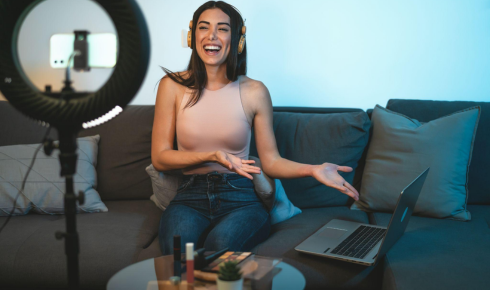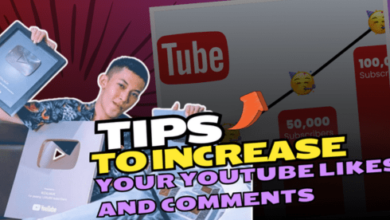Maximizing ROI Through Strategic Influencer Campaign Planning

In today’s competitive digital marketplace, brands are constantly seeking innovative ways to connect with their target audiences while maximizing their marketing investments. The strategic planning and execution of influencer campaigns have become critical components of successful marketing strategies, requiring careful consideration of numerous factors to achieve optimal results. Understanding the intricacies of campaign development, from initial concept to final analysis, can significantly impact a brand’s ability to generate meaningful returns on their marketing investments.
The Foundation of Effective Campaign Strategy
Successful influencer campaigns begin with comprehensive market research and clearly defined objectives. Brands must first identify their target demographics, understanding not only who their ideal customers are but also where they spend their time online and what type of content resonates with them. This foundational knowledge guides every subsequent decision in the campaign development process.
Setting measurable goals is crucial for campaign success. Whether the objective is increasing brand awareness, driving website traffic, generating leads, or boosting sales, having specific, quantifiable targets allows brands to track progress and evaluate campaign effectiveness. These goals should align with broader business objectives and be realistic given the allocated budget and timeline.
The selection of key performance indicators (KPIs) directly impacts how success is measured and reported. Beyond traditional metrics like reach and impressions, modern campaigns focus on engagement quality, conversion rates, customer acquisition costs, and lifetime value calculations. These deeper metrics provide more meaningful insights into campaign performance and help justify marketing investments to stakeholders.
Understanding Audience Dynamics and Platform Behaviors
Different social media platforms attract distinct user demographics and exhibit unique engagement patterns. Instagram users typically respond well to visually appealing content and lifestyle-focused messaging, while LinkedIn audiences prefer professional and educational content. Understanding these platform-specific behaviors helps brands tailor their messaging and select appropriate influencers for each channel.
Timing plays a crucial role in campaign success. Analyzing audience activity patterns, seasonal trends, and cultural events helps brands schedule content for maximum visibility and engagement. The timing of campaign launches, content publication schedules, and promotional periods should align with when target audiences are most active and receptive to marketing messages.
Cross-platform integration has become increasingly important as consumers interact with brands across multiple touchpoints. Coordinating messages across various social media platforms while adapting content to suit each platform’s unique characteristics creates cohesive brand experiences that reinforce key messages and increase overall campaign effectiveness.
Influencer Selection and Partnership Development
The process of identifying and selecting appropriate influencers requires careful evaluation of multiple factors beyond follower count. Audience alignment, content quality, engagement rates, brand safety considerations, and past partnership performance all contribute to the selection process. The most successful campaigns of Influence Hunter demonstrate the importance of matching influencers with brands based on shared values and complementary audience demographics.
Due diligence in influencer vetting has become increasingly sophisticated, involving analysis of follower authenticity, engagement patterns, content consistency, and potential reputation risks. Brands must assess whether an influencer’s audience consists of genuine followers or artificially inflated numbers through purchased followers or engagement pods.
Contract negotiations and partnership agreements establish the framework for successful collaborations. Clear expectations regarding deliverables, timelines, creative guidelines, usage rights, and compensation structures prevent misunderstandings and ensure smooth campaign execution. These agreements should also address contingencies for underperformance or unexpected issues that may arise during campaign implementation.
Content Strategy and Creative Development
Effective influencer campaigns balance brand messaging with authentic content creation that resonates with the influencer’s audience. Overly promotional content often fails to engage audiences, while completely hands-off approaches may result in messaging that doesn’t align with brand objectives. Finding the right balance requires clear communication and collaborative content planning.
Content diversification across different formats and platforms maximizes campaign reach and engagement. Combining static posts, video content, stories, reels, and live sessions creates multiple touchpoints for audience interaction and accommodates different content consumption preferences. This multi-format approach also provides more opportunities for message reinforcement and audience engagement.
User-generated content amplification extends campaign reach beyond the initial influencer posts. Encouraging followers to create and share their own content related to the campaign creates organic engagement and provides additional authentic content for brands to repurpose across their own marketing channels.
Technology Integration and Performance Optimization
Advanced tracking and analytics tools enable real-time campaign monitoring and optimization. These technologies provide insights into content performance, audience engagement patterns, and conversion tracking, allowing brands to make data-driven adjustments during campaign execution rather than waiting for post-campaign analysis.
Automation tools streamline campaign management processes, from influencer outreach and communication to content approval and performance reporting. These efficiencies allow marketing teams to focus on strategic planning and creative development rather than administrative tasks.
Artificial intelligence and machine learning algorithms are increasingly being used to predict campaign performance, identify optimal posting times, and recommend content modifications based on early engagement patterns. These technologies help brands optimize their campaigns for maximum effectiveness while reducing the guesswork traditionally associated with influencer marketing.
Measuring Long-term Impact and Building Sustainable Strategies
Successful influencer campaigns consider both immediate results and long-term brand building effects. While short-term metrics like engagement rates and click-through rates provide immediate feedback, long-term indicators such as brand sentiment, customer lifetime value, and organic mention increases offer deeper insights into campaign effectiveness.
Building sustainable influencer marketing strategies requires developing long-term relationships rather than focusing solely on individual campaign results. Brands that invest in ongoing partnerships with aligned influencers often achieve better results over time as these relationships develop authenticity and trust with shared audiences.
The evolution of influencer marketing continues to create new opportunities for brands willing to adapt their strategies and embrace emerging trends. By focusing on strategic planning, authentic partnerships, and continuous optimization, brands can maximize their return on investment while building meaningful connections with their target audiences through well-executed influencer campaigns.


